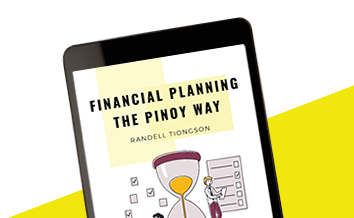2015 Outlook, part 12
By Randell Tiongson on February 4th, 2015
Years of steady structural reforms under 4 Presidents, improved demographics, technology shifts and many other factors have been factors behind the Philippine growth story. I would like to personally thank the BSP for being a strong institution that has made all this growth a reality.
As I close this 2015 Outlook series, I believe that the best way to do so is to feature the views of one of my favorite economic icons in the country, BSP Deputy Governor Diwa Guinigundo. How I wish more and more people can learn from him which will not only give you wisdom, it will help you with your faith.
The 2015 Outlook of BSP Deputy Governor Diwa Guinigundo
I continue to see the Philippine economy performing in accordance to its higher potential capacity. Four factors support this trend that many people may not be exactly aware.
One, with sustained technology application, total factor productivity has improved over the years. Two, economic efficiency has gained more traction. Three, labor market dynamics have been favorable with more educated, more trained graduates joining the labor pool. And finally, demographic factor has been supportive with more young people keeping the dependency ratio relatively low.
What drove these growth-positive factors have been the twenty years of steady policy and structural reforms. These are 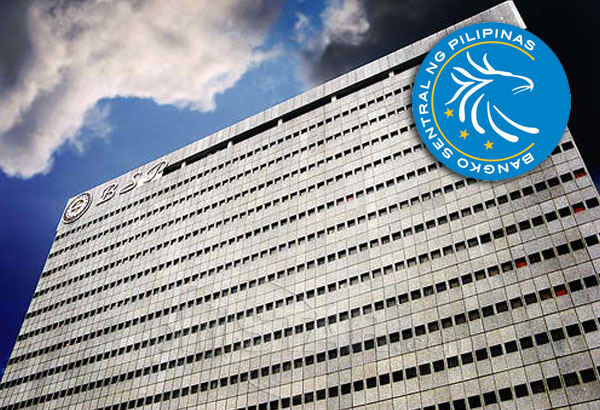 clearly a demonstration that the Philippine Government has attained a good sense of governance. Four presidencies have continued with building institutions. If nations fail because of bad institutions, one can therefore argue that the Philippines has achieved strong resiliency because it has been heavily engaged in institution building even through the Global Financial Crisis in 2007-2009.
clearly a demonstration that the Philippine Government has attained a good sense of governance. Four presidencies have continued with building institutions. If nations fail because of bad institutions, one can therefore argue that the Philippines has achieved strong resiliency because it has been heavily engaged in institution building even through the Global Financial Crisis in 2007-2009.
It should not therefore be surprising if I will uphold the government target of 7-8 percent economic growth in 2015 and 2016. I see more diversified sources of growth: more investment and public spending supporting private consumption, manufacturing, construction and agriculture contributing to the growth process complimentary to services. That growth range has been achieved at some point in the past, I don’t see any reason why that should be elusive in the future. What we need to see is more infrastructure and infrastructure.
With investment grade continuing to go up, both domestic and foreign investment should remain bullish about the Philippines. Infrastructure including power should remain the focus of these investments.
With good supply prospects and pro-active monetary policy, helped by the decline in oil and other commodity prices, I see inflation averaging at a rate comfortably within the lower target range of 2-4 percent for both 2015 and 2016. The BSP and the national government have good monetary and fiscal space, respectively, to continue promoting price stability and good public finance.
On the external front, I see our initial forecast of sustained external payments surplus continuing to be broadly appropriate. The balance of payments should be able to bounce back strongly from a shortfall in 2014 to a surplus in both 2015 and 2015, with the current account expected to show increasing positive position of at least $6.0 billion.
These are premised on one, recovery in the global economy but at an uneven pace. This dimension is important because unevenness should lead to divergent monetary policies. US is turning the corner so I expect it to start preparing the stage for some tightening which could result in some capital outflows in the Philippines. Europe and Japan remain soft so monetary policy is needed to be accommodative which could drive some capital to flow to emerging markets including the Philippines. China and India are the other difficult challenges with structural issues threatening to pull them down so we should see a generalized easing among many central banks. All told, the asynchronous policies could pull each other apart and generate some volatilities in the global and regional financial markets. The Philippines should be very vigilant in monitoring these developments and should be prepared to act decisively as necessary.
I also expect to see our strong and stable banking system continuing to provide additional resiliency to the economy. Financial intermediation is expected to remain supportive of economic growth. With key reforms in place and expected to be pursued, market confidence should remain strong and this is something that does not come by easily.
There would always be some risks even at the tail end. This is the reason why the BSP is always doing stress tests and scenario building exercises to ensure we are not surprised by external shocks. This is the reason why we have a stable of early warning systems on the key sectors of the economy including the business cycle.
So paraphrasing Einstein, let me say that what is incomprehensible about the economy is that it is comprehensible.
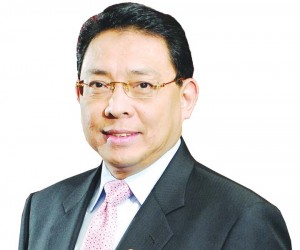 Mr. Guinigundo is the deputy governor of the Bangko Sentral ng Pilipinas in charge of monetary policy and operations, international relations and operations, currency management and regional monetary affairs. He was the Philippines’ representative at the IMF, Washington, DC as alternate executive director. Previously, he was head of research at the Southeast Asian Central Banks Research and Training Center in Kuala Lumpur. At present, he chairs the SEACEN Experts Group on Capital Flows and a member of the SEACEN Executive Committee. He sits at the NEDA Board, National Food Authority Council and National Home Mortgage Finance Corporation Board.
Mr. Guinigundo is the deputy governor of the Bangko Sentral ng Pilipinas in charge of monetary policy and operations, international relations and operations, currency management and regional monetary affairs. He was the Philippines’ representative at the IMF, Washington, DC as alternate executive director. Previously, he was head of research at the Southeast Asian Central Banks Research and Training Center in Kuala Lumpur. At present, he chairs the SEACEN Experts Group on Capital Flows and a member of the SEACEN Executive Committee. He sits at the NEDA Board, National Food Authority Council and National Home Mortgage Finance Corporation Board.
Outside government, Mr Guinigundo is the senior pastor of a local Christian church, Fullness of Christ International Ministries, and advises the BSP Christian Fellowship. He leads in the nationwide Touching Heaven Changing Earth which aims to unite the body of Christ in the Philippines.
2015 Outlook, part 10
By Randell Tiongson on February 1st, 2015
One of the big reasons why the Philippine economy remains to be in a positive track is because of the enormous remittances that our OFW heroes are sending home month after month. In 2014, the remittances exceeded $25 Billion and we are not expecting that to slow down anytime soon.
For this installation of the 2015 Outlook, I am featuring the views of an OFW himself, Burn Gutierrez. Burn is one of the driving force behind the increasing financial literacy of the OFW’s through his vast network of OFW’s world-wide. He is the founder of the OFW Usapang Piso, an on-line group that has over 33,000 members world-wide. An accountant by profession, he envisions seeing the OFW as financially enabled in the near future.
The 2015 Outlook of OFW Usapang Piso’s Burn Gutierrez
The year 2014 has been a year of new opportunities and challenges for OFWs especially in the Middle East. In Saudi Arabia, we saw thousands of undocumented OFWs or those whose visa sponsorships has either expired and have not been renewed by their respective employers repatriated to the Philippines.
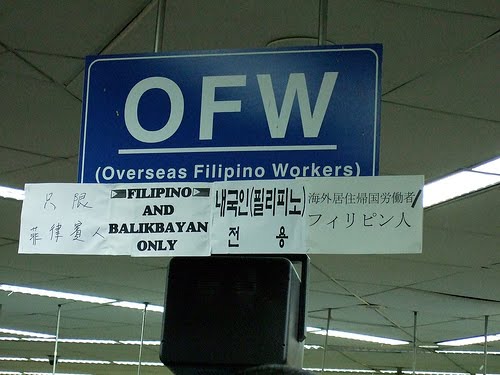 There have also been a significant decrease in the number of OFWs in Saudi Arabia while more Filipinos have emigrated to Canada or the USA according to the statistics provided by the Commission on Filipinos Overseas. This could mean that many OFWs still view North America as the ultimate continent to immigrate to. I believe this migration trend will still continue this year.
There have also been a significant decrease in the number of OFWs in Saudi Arabia while more Filipinos have emigrated to Canada or the USA according to the statistics provided by the Commission on Filipinos Overseas. This could mean that many OFWs still view North America as the ultimate continent to immigrate to. I believe this migration trend will still continue this year.
Interestingly, BSP’s recent survey revealed that more Filipinos abroad and their families back home are allocating their remittances for savings and investments. The survey showed that OFW’s families savings increased to 42.1% in the last quarter of 2014 from the 39.7% in the previous quarter. Funds for investments also increased from 6.3% to 6.8%.
I would like to note and give credit to this development to a handful of financial literacy advocates and investment personalities who are gaining popularity on Filipino households abroad because of their exposure in Philippine TV shows streamed abroad by GMA PinoyTV, The Filipino Channel, and AksyonTV.
Another venue that will continue to aid the learning journey of OFW’s is the social media, especially the growing number of Facebook groups and pages that aim to educate Filipinos about paying consumer debts, saving for emergencies, insuring themselves, and investing in paper assets in addition to promoting traditional entrepreneurship. More OFW’s are starting to get information about affordable investing through the these social media groups and non-profit organizations online.
While this development do sound favorable, throngs of fraud schemes and online scams will still go after the hard-earned money of many OFW’s and their dependents this year. In the same manner, the combined vigilant effort of government agencies and non-profit organizations will help in identifying and fighting these scams.
The year 2015 will be a great year for many Filipinos to start their own businesses in the Philippines. Our OFW’s will realize this urgency considering the continuous falling of oil prices that may affect their current work overseas, most especially those who are working in the Middle East and the Americas. OFW’s should have this alternative plan while they still have their contract live in their respective countries of work.
Burn Gutierrez is an accountant and auditor based in Al Khobar in the Kingdom of Saudi Arabia. He is the founder 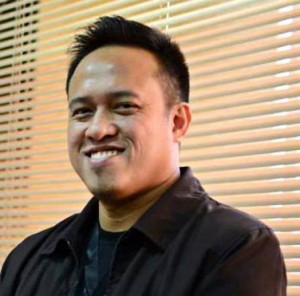 of the OFW Usapang Piso Facebook group and the Angat Pilipinas Coalition. Through his efforts, OFWs all over the world are becoming financially aware. His extensive experience in the auditing and finance has equipped him to help the plight of the OFW’s achieve financial freedom.
of the OFW Usapang Piso Facebook group and the Angat Pilipinas Coalition. Through his efforts, OFWs all over the world are becoming financially aware. His extensive experience in the auditing and finance has equipped him to help the plight of the OFW’s achieve financial freedom.
2015 Outlook, part 9
By Randell Tiongson on January 23rd, 2015
Interest rates, heightened geopolitical risks, global growth and many other factors will have an effect on 2015 and yet, Riza Mantaring, the CEO of the country’s number 1 life insurance company (Sun Life) feels that Philippine outlook is still positive. Ms. Mantaring’s company has been in the forefront of getting Filipinos financially abled and she views that there is still a lot to be done.
The 2015 Outlook of Riza Mantaring
Giving an outlook for the year almost seems like a shot in the dark given how wrong most people were last year — equities market expected to be slow in anticipation of higher interest rates and a global slowdown, but the PSEi ended the year up 22.8% and close to its all-time high; US interest rates expected to be up with the end of quantitative easing, but ended the year much lower; Philippine treasuries expected to move past 5% but ended at 4.5%; oil prices hit an all-time high mid-year at $107/barrel but ended at $53, a price not seen in years.
Again, this year, interest rates are expected to move up, and heightened geopolitical risks and global growth dragged by Europe and China may cause some volatility, but for the Philippines, our outlook is quite positive. Abundant liquidity, lower oil prices, and a slightly weaker currency will all contribute to strong domestic consumption. Aside from this, anticipation of election spending and increased government spending on infrastructure and public works can all contribute to higher GDP.
 Riza is a member of the Sun Life Asia Executive Team. She has also participated in various international special projects and teams such as the task force for worldwide restructuring of the company, the task force for business processes, and special teams for Mergers & Acquisitions.
Riza is a member of the Sun Life Asia Executive Team. She has also participated in various international special projects and teams such as the task force for worldwide restructuring of the company, the task force for business processes, and special teams for Mergers & Acquisitions.
In 2010, on the occasion of the 100th anniversary of the University of the Philippines College of Engineering, she was selected one of the 100 Most Outstanding Alumni of the past century. In 2011, she was named by Moneysense Magazine one of the 12 Most Influential in Personal Finance. She is also a recipient of the 2011 CEO EXCEL award given by the International Association of Business Communicators. Riza was recognized for bold and innovative programs anchored on a five year strategy, “Route 5”, and harnessing the power of communication to implement these programs, including the multi-awarded and pioneering “It’s Time!” financial literacy advocacy. The strategies and programs put in place have resulted in unprecedented growth for Sun Life in sales, assets under management, and provincial presence.
In February 2011, the company announced the acquisition of 49% of Grepalife Financial Inc, creating Sun Life Grepa Financial and opening up the bancassurance channel for Sun Life.
Riza graduated with a B.S. Electrical Engineering degree (cum laude) from the University of the Philippines, and an M.S. Computer Science from the State University of New York at Albany. She has also attended numerous executive development programs conducted by Harvard University, The Wharton School, Duke University, Oxford University, Asian Institute of Management, and The Niagara Institute. She is a Fellow of the Life Management Institute (with distinction).
She was a board director of the Philippine Life Insurance Association from 2011-2013, serving as Secretary in 2012 then Treasurer in 2013. She served as a board director of the Philippine Federation of Pre-need Companies from 2006-2008.
Riza also serves as an independent director of Ayala Land Inc., the country’s largest real estate firm, and Microventures Foundation Inc., which runs the Hapinoy social entrepreneurship program.
 clearly a demonstration that the Philippine Government has attained a good sense of governance. Four presidencies have continued with building institutions. If nations fail because of bad institutions, one can therefore argue that the Philippines has achieved strong resiliency because it has been heavily engaged in institution building even through the Global Financial Crisis in 2007-2009.
clearly a demonstration that the Philippine Government has attained a good sense of governance. Four presidencies have continued with building institutions. If nations fail because of bad institutions, one can therefore argue that the Philippines has achieved strong resiliency because it has been heavily engaged in institution building even through the Global Financial Crisis in 2007-2009. Mr. Guinigundo is the deputy governor of the Bangko Sentral ng Pilipinas in charge of monetary policy and operations, international relations and operations, currency management and regional monetary affairs. He was the Philippines’ representative at the IMF, Washington, DC as alternate executive director. Previously, he was head of research at the Southeast Asian Central Banks Research and Training Center in Kuala Lumpur. At present, he chairs the SEACEN Experts Group on Capital Flows and a member of the SEACEN Executive Committee. He sits at the NEDA Board, National Food Authority Council and National Home Mortgage Finance Corporation Board.
Mr. Guinigundo is the deputy governor of the Bangko Sentral ng Pilipinas in charge of monetary policy and operations, international relations and operations, currency management and regional monetary affairs. He was the Philippines’ representative at the IMF, Washington, DC as alternate executive director. Previously, he was head of research at the Southeast Asian Central Banks Research and Training Center in Kuala Lumpur. At present, he chairs the SEACEN Experts Group on Capital Flows and a member of the SEACEN Executive Committee. He sits at the NEDA Board, National Food Authority Council and National Home Mortgage Finance Corporation Board.



